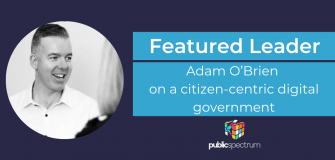Organisations within the public sector often think that social media work is easy, and would end up relying on one or few people to achieve its social media goals.
But with the impact of the COVID-19 crisis, the public sector is forced to innovate its communication and marketing strategies by embracing the digital world and utilising social media platforms. This sudden change in strategies has caused organisations to struggle with securing budget allocation for their social media team.
So, how can social media professionals from the public sector still achieve their goals with having little to no budget?
Start by determining a strategy
Having a social media strategy is often overlooked, despite it being the most powerful tool to drive citizen engagement. A specific approach is vital in any marketing endeavor, especially if you can only have so much money to spare.
In order to create a social media strategy, teams can start pinpointing particular accomplishments in social media and focus on setting goals to achieve these accomplishments, all while making sure that the goals align with business value.
For instance, if the interest is to gain engagement, determining the intention of such engagement is needed. What is the purpose of each post? Is it to bring the audience to a sign-up page to gain more subscribers?
Focus on a few social media channels
A small social media team cannot keep tabs of all of the organisation’s social media networks, so knowing which channel to prioritize will save time and effort.
To identify a channel to focus on, a organisation can check what resources they have available. For example, if they have a large video production capacity, that means they can focus on producing content for Youtube and Facebook. But if they can only publish simple visuals and texts, then they can focus on LinkedIn, Facebook and Twitter.
Organisations may also need to check on their social media channel’s demography. Where are their customers more active? What kind of content do their customers subscribe? They can visit their customer’s pages and profiles to check this or use a free version of tools like BuzzSumo to know what viral content keeps their potential followers up at night.
Follow a process
In social media, timing is the most overlooked part of the puzzle. Posting a content out of a gut feel will eventually become another wasted effort.
Establishing a social media process includes scheduling a time dedicated to content planning, content creation, and social media maintenance. It provides efficiency that can develop an instinct on how a social media channel works without delving into the algorithm. This trains the team to become familiar with the social media environment through a systematic process, gaining a “social media muscle memory.”
Determine the tools to use
There are many free social media tools online that businesses with a little budget can maximize. Google alerts can monitor trending keywords that can incorporate into a social media post. The free version of Hootsuite can also be a nifty tool for scheduling posts around the clock.
However, it is crucial for organisations to still have a genuine persona when interacting on these channels, as automated posts can defeat that process of connecting with the audience when it becomes too spammy.
Content is King and always have been
Audiences will always demand fresh content, and this pressure varies on every social media channel. A Twitter page, for example, needs at least three posts a day to become engaging.
To create content with little budget, social media teams can use free tools like Canva and free image providers like Unsplash. Crowdsourcing content is also not a bad idea and can drive more engagement from the community.
Jump on the bandwagon of another channel’s success
Also known as piggyback marketing, organisations can use the popularity of other brands to give their social media marketing a boost.
By using Google alerts and Google trends, a post can contain reshared viral memes, videos, and high traffic content. This will show that the organisation’s personality, making it relatable to the general public.
Get the word out
Employees are the first group of people who can get the word out about an organisation. They can amplify the organisation’s social media presence, giving it a head start in online promotion. Similarly, happy customers and social groups with similar interests can also serve as advocates in the social media sphere.
Monitor performance
Finally, teams need to keep track of their social media performance in order to gain insights on what strategy works and what does not. Statistics can be used to make a case on social media ROI and may even convince the organisation to shift gears in terms of marketing focus.
Achieving social media goals with no budget
Despite having little to no budget allocation for your social media strategies, it is still important to innovate and create strategies that can help you with the organisation’s channels. Establishing a good social media presence and achieving your social media goals through the provided information will not only help your team, but will also greatly contribute to the organisation’s image to the public.
Pearl Dy is a community manager and journalist. She is passionate about business and development particularly involving digital economy, not-for-profits, charity and social entrepreneurship.




























































